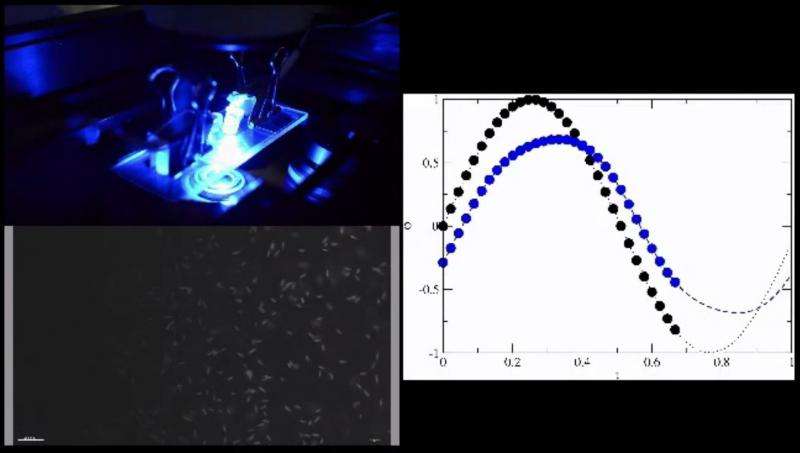New study shows the dynamics of active swarms in alternating fields

Researchers from Uppsala University, together with colleagues at University College Dublin, have studied the dynamics of active swarms using computer simulations and experiments on unicellular algae. The team not only found full analogy of the active motion in a field to magnetic hysteresis but also managed to quantify the controllability of the swarm and identify the signatures of collective behavior of the active agents.
Active motion of living organisms and artificial self-propelling particles has been an area of intense research at the interface of biology, chemistry and physics. In nature, some active species can move independently of each other, some form spectacular flocks and swarms.
One of the observations that boosted the development of theory of flocking is that the active species may behave much like magnetic spins: they achieve coherent motion by aligning their direction to the nearest neighbours. It remained unknown, however, whether a swarm can be also controlled by external field in a way similar to permanent magnets (such as compass needle).
Researchers from the Department of Mathematics at Uppsala University (Dr. Maksym Romensky) together with colleagues from School of Physics of University College Dublin (Dr. V. Lobaskin and Dr. D. Scholz) in their recent work published in the Journal of Royal Society Interface studied the dynamics of active swarms in alternating fields.
The team measured hysteresis of the velocity of an active swarm in computer simulations and experiments on unicellular algae Euglena gracilis. The phototactic Euglena cells were driven by variable illumination and tracked using microscopy.
The team not only found full analogy of the active motion in a field to magnetic hysteresis but also managed to quantify the controllability of the swarm and identify the signatures of collective behavior of the active agents. In particular, the collective response was only possible when the field was varying slowly and the active species had enough time to align their motion. The group's motion was then more persistent than that of an individual.
By contrast, at high field frequencies, the active group fails to develop the alignment and tends to behave like a set of independent individuals even in the presence of interactions. The authors suggest that the observed laws might describe a variety of dynamic phenomena from the motion of synthetic active particles to animal flocks and herds, human crowd or opinion dynamics and help to formulate the general laws of collective behaviour.
More information: "Hysteretic dynamics of active particles in a periodic orienting field," Journal of Royal Society Interface. rsif.royalsocietypublishing.or … tent/12/108/20150015
Provided by Uppsala University





















